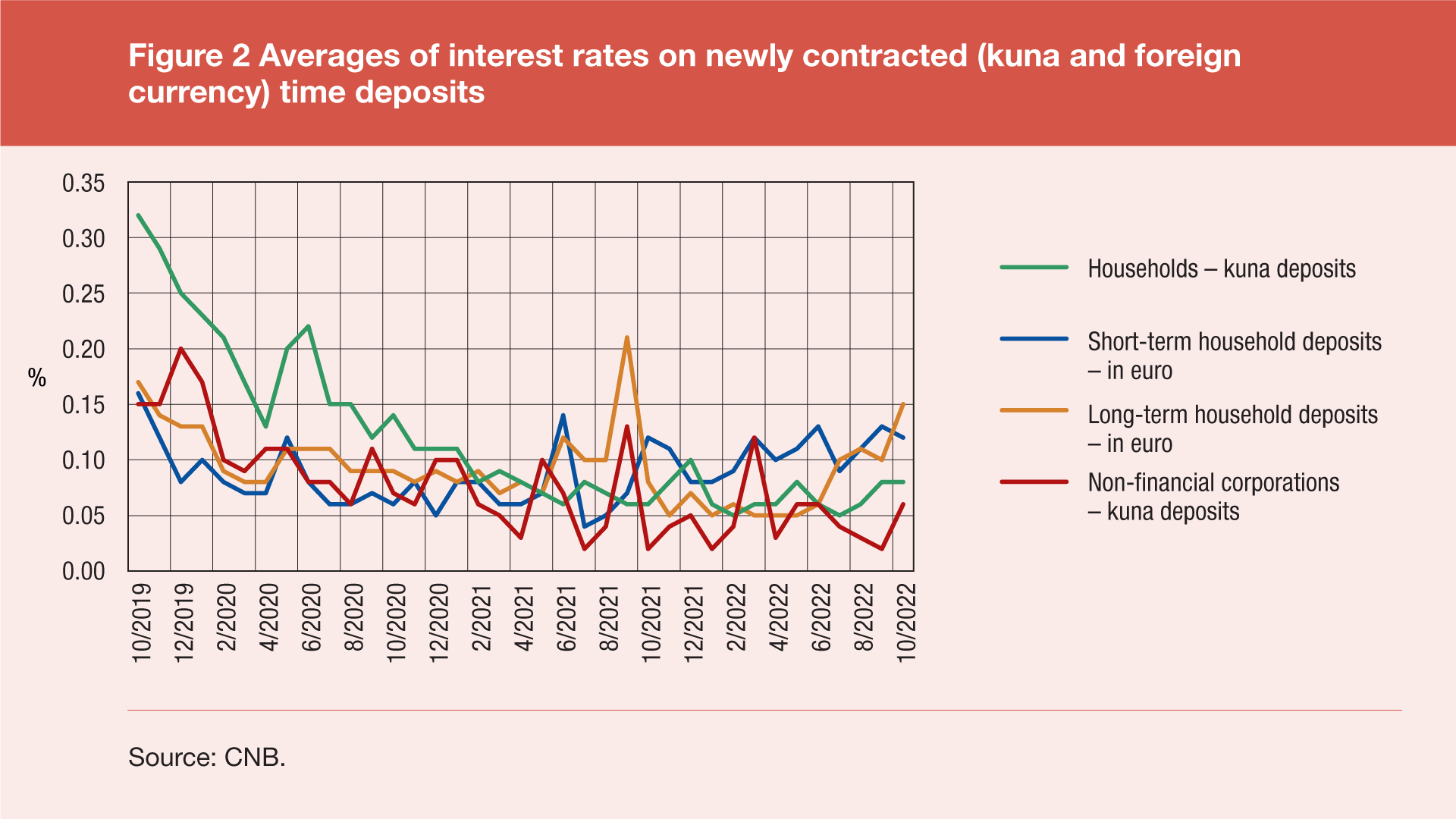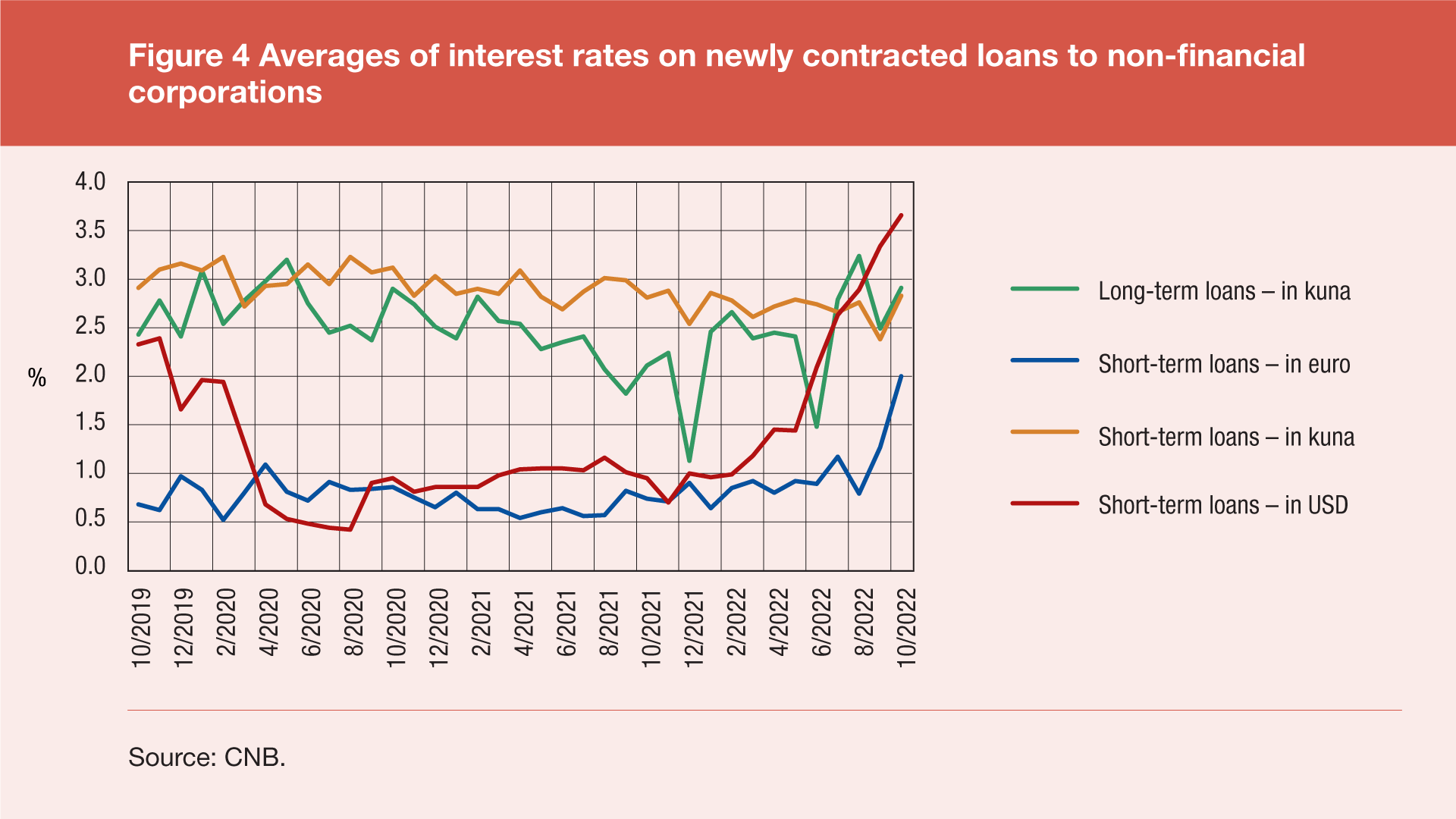Statistical releases provide a summary of the most recent values and trends for the published statistical indicators series compiled by the Croatian National Bank.
Statistics
- Release calendar
- Statistical releases
- Indicators of banking system operations
- Main macroeconomic indicators
-
Statistical data
-
Financial sector
- Republic of Croatia contribution to euro area monetary aggregates
- Consolidated balance sheet of MFIs
- Central bank (CNB)
- Other monetary financial institutions
- Other financial corporations
- General government sector
- External sector
- Financial accounts
- Securities
- Selected non-financial statistics
- Payment systems
- Payment services
- Currency
- Turnover of authorised exchange offices
- Archive
-
Financial sector
- SDDS
- Regulations
- Information for reporting entities
- Information for users of statistical data
- Use of confidential statistical data of the CNB for scientific purposes
- Statistical surveys
- Experimental statistics
Statistical releases
Credit institutions’ interest rate statistics for October 2022
Statistical indicators of interest rates[1] of credit institutions on their main sources of funds continued their years-long downward trend or stagnation in transaction accounts in October 2022, in contrast to indicators for time deposits, which grew relative to October 2021.
As regards transaction accounts (current and giro), the averages of interest rates on kuna and foreign currency accounts of households were at the same level in October 2022 as in October 2021 and stood at 0.01%. The averages of interest rates on kuna and foreign currency transaction accounts of non-financial corporations were 0.00% and 0.01% respectively, with both averages being 0.01 percentage point lower than in October 2021.

In October 2022, the average of interest rates on household time deposits in kuna stood at 0.08% (0.02 percentage points higher than in the same month of the previous year), while the average of interest rates on kuna time deposits of non-financial corporations was 0.06% (up by 0.04 percentage points from October 2021). The averages of interest rates on short-term and long-term household time deposits in euro stood at 0.12% and 0.15% respectively in October 2022, which is an annual increase of 0.07 percentage points in the long-term average.

Statistical indicators of interest rates of credit institutions on the most important types of loans granted to non-financial corporations and on housing loans granted to households in October 2022 indicate growth relative to October 2021, while other loan categories granted to households continued their years-long downward trend.
As for the main categories of household loans, the highest average of interest rates in October 2022 was recorded for kuna loans in the form of transaction account overdrafts. It fell significantly as early as in September 2022, and in October it was 5.36% (1.93 percentage points down from October 2021), following the beginning of the implementation of the Memorandum of Understanding in respect of current account overdrafts signed on 22 July 2022. The lowest average of interest rates was seen in housing loans indexed to foreign currency (2.69%, up by 0.03 percentage points from October 2021).

As regards the main categories of loans to non-financial corporations, the highest average of interest rates in October 2022 was seen in short-term loans in USD (3.66%, up by 2.71 percentage points from October 2021), thus continuing its several-months growing trend. The lowest average of interest rates was recorded in short-term euro loans (2.00%, up by 1.26 percentage points from October 2021), which also increased significantly in September and October 2022. In contrast to loans in USD and EUR, kuna loans granted to non-financial corporations, despite oscillations, recorded a less pronounced growth from October 2021.
Figure 4 Averages of interest rates on newly granted loans to non-financial corporations

Statistical time series: Credit institutions’ interest rates
-
Statistical indicators of interest rates are calculated as weighted monthly averages of agreed (nominal) interest rates on new deposit and loan contracts between credit institutions and their clients from the household sector (citizens and non-profit organisations) and the non-financial corporate sector (corporations outside the financial sector and the government sector) in a given month. New contracts include all contracts that specify for the first time the interest rate, and all renegotiations of the terms and conditions of the existing contracts. The weights used in the calculation are contracted amounts of newly received deposits and newly granted loans, with the exception of transaction accounts and demand deposits as well as transaction account overdrafts and credit card loans, which are assumed to be contractually renewed each month, but in indefinite amounts; for this reason, the weights used are their corresponding book balances at the end of a month. Indicators that are being calculated differ according to the instrument, currency, maturity and sector to which deposits and loans relate. ↑
